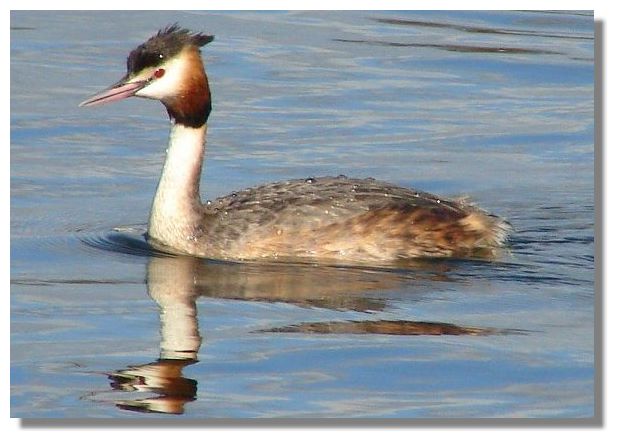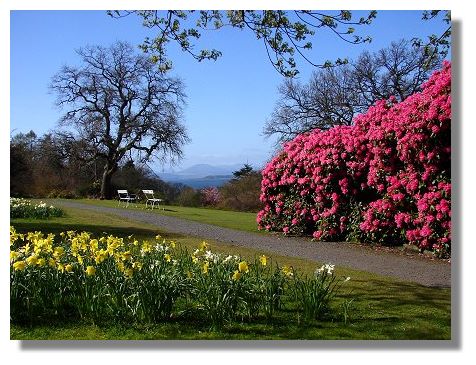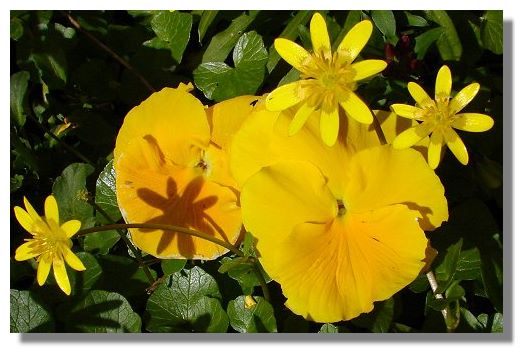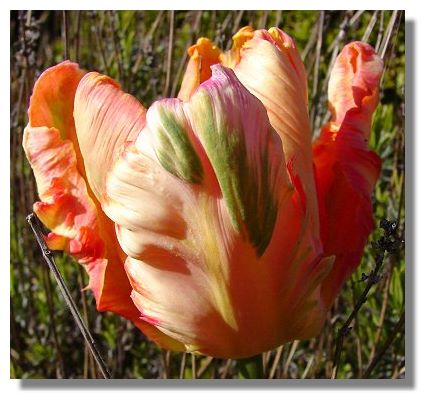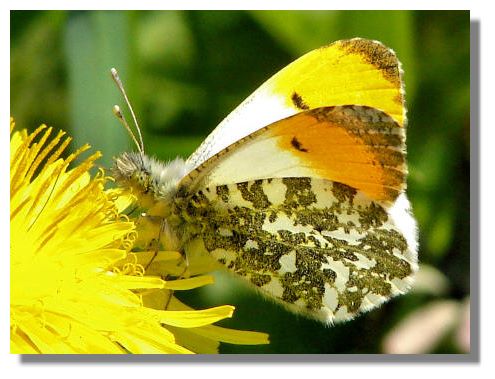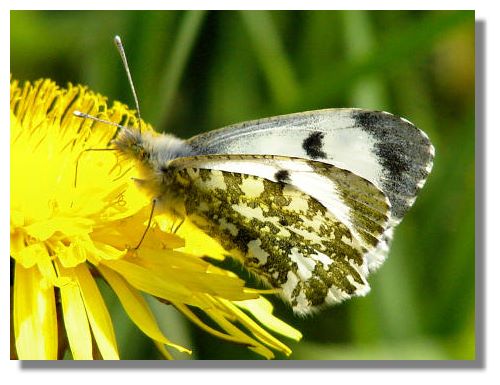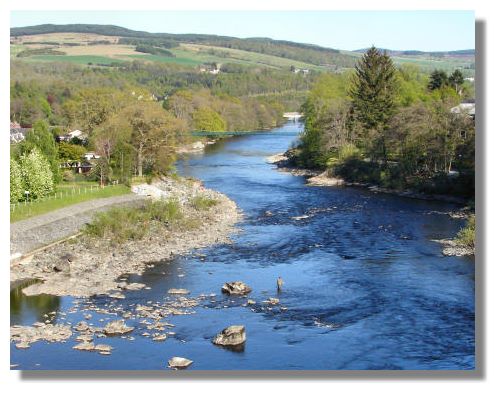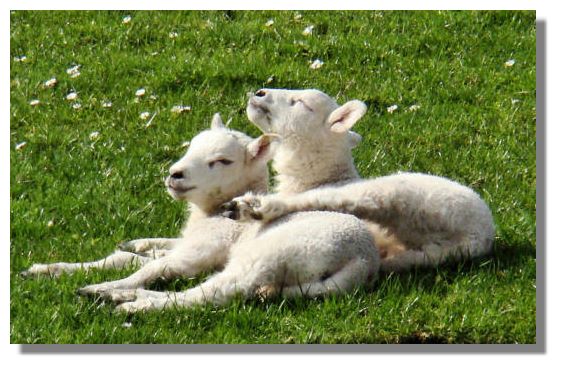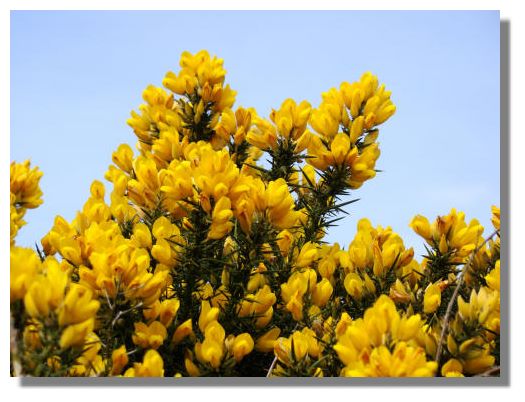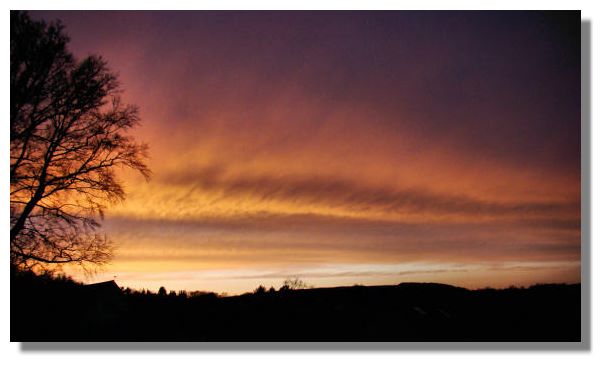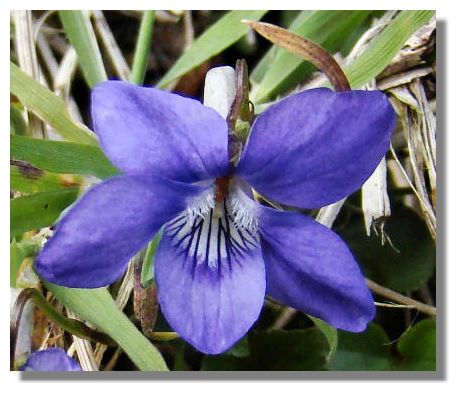This male Great Crested Grebe is now coming out of its winter colours and developing its courtship plumage. Soon, the head plumes will look more like Mickey Mouse ears - all the better to impress his mate. Their courtship dance is quite complex and involves presenting water weed to one another and rising out of the water. Last year, the Grebes at Drumpellier Country Park failed to raise a family as the water levels rose at the wrong time and flooded the nest. Here's hoping they will be more successful this year so we can see the young birds hitching a ride on the backs of their parents. The Great Crested Grebe in this picture had been diving to catch some fish - hence the water droplets on his back.
The Firth of Clyde and the hills of Argyllshire can be seen in the distance in this shot of the daffodils and rhododendrons in Finlaystone Country Estate in Inverclyde.
Here, the bright sunshine is casting a shadow of a Lesser Celandine into the petals of the Pansies.
The wide variety of tulips available nowadays is staggering. This is a so-called Parrot Tulip, growing in the walled garden in Finlaystone Country Estate.
Many species of butterfly have declined in numbers but the beautiful Orange Tip has been making a rapid recovery over the last 25 years, especially in Scotland. This is a male Orange Tip - they come out of their chrysalis 7/10 days before the female. This one was having a sip of nectar from a dandelion.
As is often the case in nature, the female Orange Tip is not nearly as colourful as the male. The upper side of her wings look just like the more common Small White butterfly. In fact, this is the first picture I have ever managed to take of a female Orange Tip. They are usually flitting rapidly along hedgerows, road verges, and woodland edges. The mottled pattern on the underside hindwings provides excellent camouflage when they roost on flower heads.
Although this picture looks as though it might have been taken from a helicopter or a low-flying aircraft, it was actually from the top of dam forming the river Tummel hydro-electric scheme at Pitlochry. The lack of rainfall has meant that the river below is at a very low level - and the salmon fisherman is taking advantage of that and wading out almost to the middle.
There are quite a lot of spring lambs in the fields now. These two siblings seem to be enjoying the sunshine - but still keeping close to one another for warmth!
There are Gorse flowers to be seen at all times of the year, but they burst forth with lots of blooms particularly from March to July. They produce a strong scent - described as a mixture of vanilla and coconut. They flower at any time of year (though not in quite such profusion) and that gave rise to the proverb: "When gorse is out of bloom, kissing's out of season".
Regular readers will know that I am always ready to take pictures of sunsets. On this occasion, I didn't have to travel far - this was the scene looking out of the loft window from my own house.
It is a shame that such a lovely flower as this should be saddled with the name of "Common Dog Violet". Illustrations on Web pages like this don't show that these delicate flowers are in reality smaller than a thumb-nail.If you want to look back at other editions of these photos of Scotland week by week, there is an Index Page
